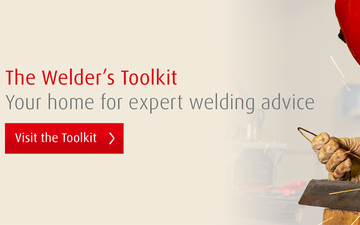- Official BOC UK Online | Industrial Gases | Products & Solutions | BOConline UK
-
Shop
- Industries
- Processes
- Gases & Equipment
-
Solutions
-
Services
-
Health & Safety
-
Contact & Support
- What's Happening
-
Net Zero Strategies
Welding Fume Update: Protect Your People and Your Wider Workplace
Posted by BOC

In 2019 the Health and Safety Executive announced a strengthening of its enforcement expectations regarding exposure to welding fume.
This followed new evidence from the International Agency for Research on Cancer demonstrating a clear link between welding fume and lung cancer, and potentially, kidney cancer.
Since then, a number of UK businesses have been prosecuted for their failure to implement adequate controls to limit workers’ exposure to welding fumes. Fines of £20,000 or more have been issued, with company directors individually prosecuted for their roles in breaching the Health and Safety at Work Act.
A reminder – what are the HSE requirements relating to welding fume?
By law, businesses must protect workers by controlling the health risks associated with welding fume.
The Health and Safety Executive recommends a three-step control process:
1. Avoid or reduce exposure
First, consider whether it’s possible to reduce workers’ exposure to welding fume by looking at ways to limit it.
This could mean mechanising the process using distance welding, enclosing the work, using materials or a process that generates less fume (for example MIG, rather than MMA welding), and using clean metals.
2. Use local exhaust ventilation (LEV)
LEV works by using an airflow to remove contaminated air from the welding process at source. Options include on-torch extraction, extracted benches or booths, or portable LEV options.
LEV is crucial for preventing the dispersion of welding fume into your wider workplace.
3. Use suitable respiratory protective equipment (RPE)
If LEV alone does not provide adequate control, or if it isn’t reasonably practicable to provide LEV, workers must be provided with suitable RPE – including when welding outdoors:
- An FFP3 disposable mask or half mask with a P3 filter should be used for work of up to an hour
- Battery powered air-fed protective equipment should be used for longer duration work, with a minimum assigned protective factor of 20 (APF20)
- Welders wearing RPE should be clean shaven with the RPE tested for face fit.
Maintaining control over the longer term
Any protective measures introduced to control welding fume must be continually assessed to remain effective and should encompass your wider workplace.
The HSE recommends a competent ventilation engineer should thoroughly test and examine your LEV system and performance at least every 14 months, while faulty equipment should be immediately repaired and checked every day for signs of damage.
Records for all examinations and tests should be retained for at least five years, while controls should be reviewed whenever there are any significant changes in your workplace.
Implementing regular monitoring of the air quality in and around your welding areas should also be considered to assess the levels of welding fumes and other pollutants in your wider workplace.
For further information to help protect your workplace from the risks associated with welding fume, read the COSHH advice sheets on welding.
The British Safety Industry Federation provides detailed guidance on RPE and face fitting.
*BOC accepts no liability for the incorrect choice of RPE and LEV. A correct risk assessment should be carried out to ensure suitable products are selected for the environment and user. Details regarding performance and limitations of products are set out on the packaging and/ or user instructions.

